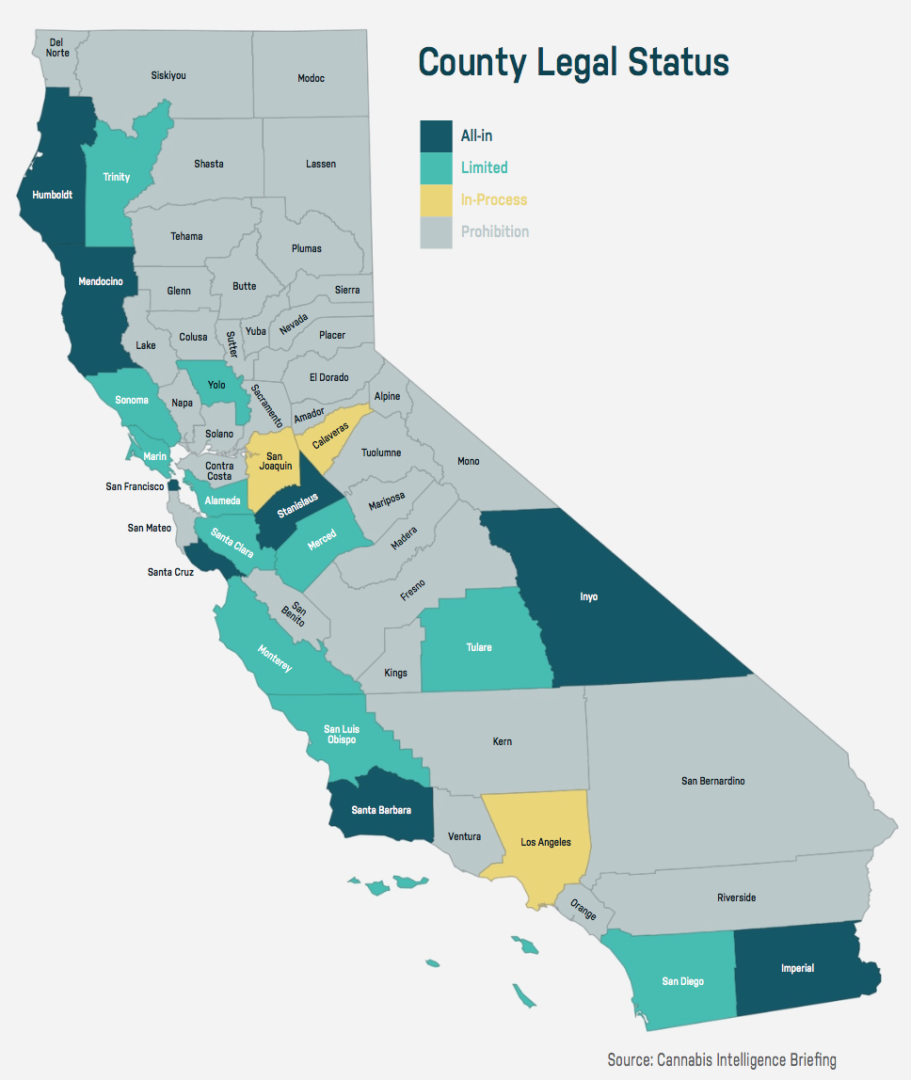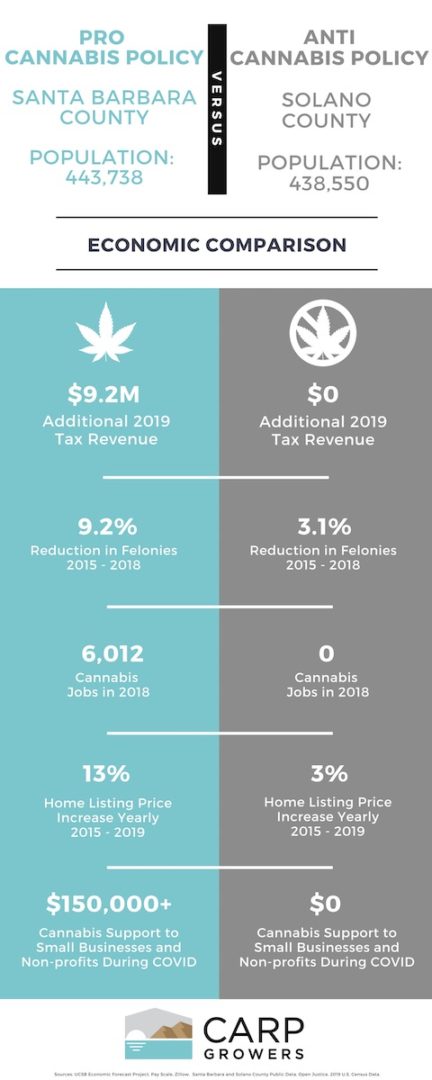County-by-County cannabis policy comparisons

When Santa Barbara County residents voted to place a tax on cannabis cultivation, the economy was strong and the added revenue appeared like a bonus. Hotel bed tax and sales tax revenues covered costs, and cannabis would be a brand new revenue stream used to expand existing county programs and enforce rules on the new cannabis industry.
Fast forward to 2020 and the COVID-19 pandemic, and it is now clear that Santa Barbara County cannabis and the tax revenue it generates are vital to the Santa Barbara County budget. In the county fiscal year for 2019/20, cannabis revenues will be nearly $10 million. During the shelter-in-place order, predictably, the county lost millions and millions of dollars from hotel bed tax, sales tax and various other fees from development projects and other frozen areas of the economy.
During this period, cannabis farmers still contributed $1.9 million to the county, and in projecting next year’s county budget, which begins in July, the county will backfill $7 million in losses with cannabis funds. To cover its added public health expenses spent in response to the pandemic, the county will earmark $3 million in cannabis revenues.
In the words of County Supervisor Steve Lavagnino, “That’s $10 million we didn’t have before.”
Tristan Strauss, CARP Growers President, said, “We as cannabis farmers supported a county level tax and are happy to pay it, but we never predicted a time like this, when our taxes would become so vital to county operations.”
While some California counties plan to slash their workforce, which include public health and law enforcement personnel, Santa Barbara County has signaled it will be able to retain workers, largely due to the added cannabis revenues.

We reviewed some figures from Solano County, which is just southwest of Sacramento, has a similar population to Santa Barbara County and does not permit cannabis business. The figures are eye opening, not just for added tax revenue and jobs, but also when looking at items like crime and home sales. Those who think Santa Barbara County should dramatically limit cannabis farming have said that farms will lead to crime and real estate market decline. The numbers tell a different story.
First off, Santa Barbara County will collect $9.2 million in cannabis cultivation taxes this year, which Solano County will not have the opportunity to collect. SB County cannabis supported over 6,000 cannabis jobs in 2018 , according to a report authored by UCSB. On the issue of crime, SB County has seen felonies drop by 9.2 percent, compared to just 3.1 percent for Solano County. Home prices have grown by 13 percent in SB County over the same period while they grew just 3 percent in Solano.
One number that CARP Growers member farms in particular point to as a benefit of successful cannabis farming is our community giving programs during the Covid-19 response. Our members gave over $150,000 to nonprofits and small businesses over the period beginning in mid-March until June. Compassionate companies can have a great positive impact on our communities, and Santa Barbara County cannabis farms have led the way.
CARP member farms acted quickly to start our “Keep the Lights On” lunch program and the 93013 Fund, both of which have proved critical to the Carpinteria community during a time of deep economic stress and pain. The lunch program directs cannabis farms to order over 1,000 lunches weekly into the local economy. This was important when restaurants had no other business. The 93013 Fund has served over 20,000 meals to date and provided school supplies for students to keep up their studies at home.
Both locally in the Carpinteria Valley, in Santa Barbara County and in counties across the state, the numbers tell a story supporting legal cannabis and the vast benefits brought to communities.

